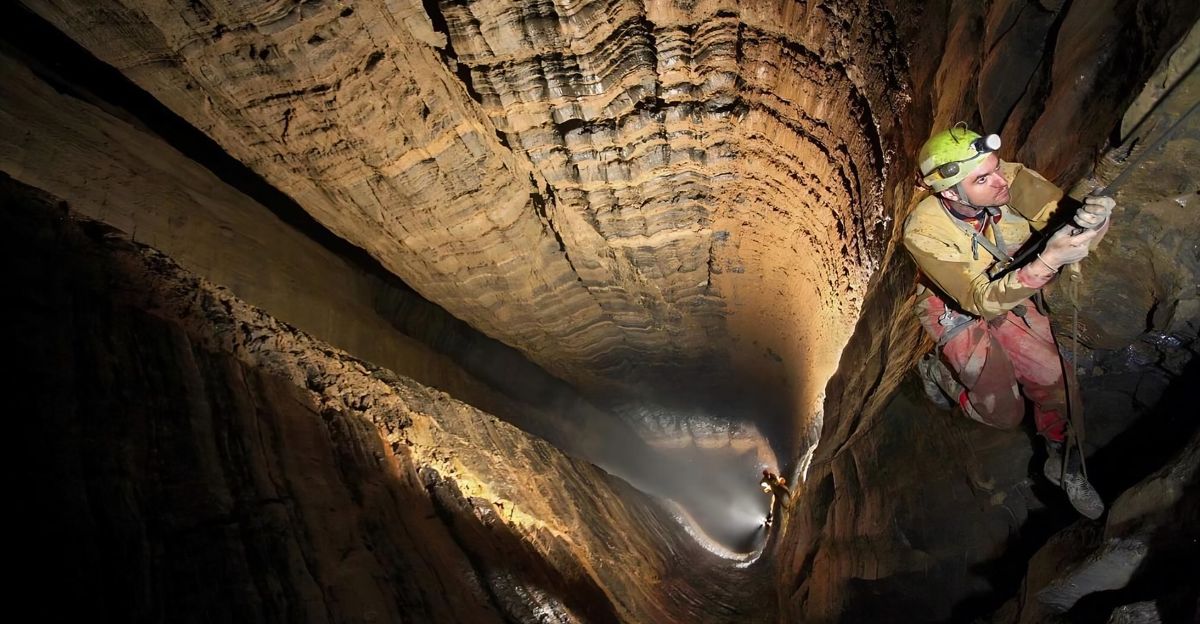
Caves are some of the most mysterious places to wander, and the United States is home to some of the largest cave systems in the world. Water and volcanic activity have carved these systems over millennia and are now set in time for adventure seekers to enjoy. If you’re looking to see the best picks of all, these are some of the must-visit caves you can find in the U.S., and just what makes them so special.
5. Hue Hue (Manini Owali) Cave, Hawaii
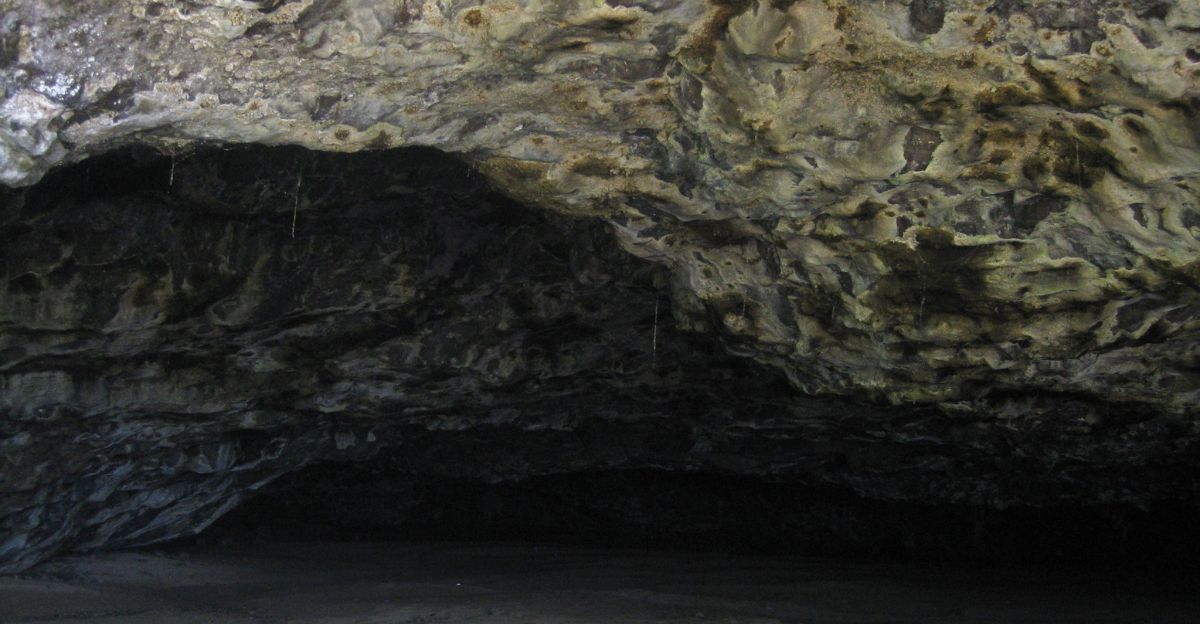
Starting off this list is the smallest of the big five, but it still has so much to offer. This remarkable cave stretches nearly 1,623 feet below the surface and extends over 6.7 miles in length. This incredible lava tube cave was formed by volcanic activity with some of the most intricate passages that were carved through ancient lava flows.
Unlike most limestone caves on this list, this cave was formed through the geological forces of Hawaii’s volcanic landscape. The cave’s isolation and challenging terrain mean it remains unexplored, preserving its pristine condition.
What Hue Hue Has to Offer
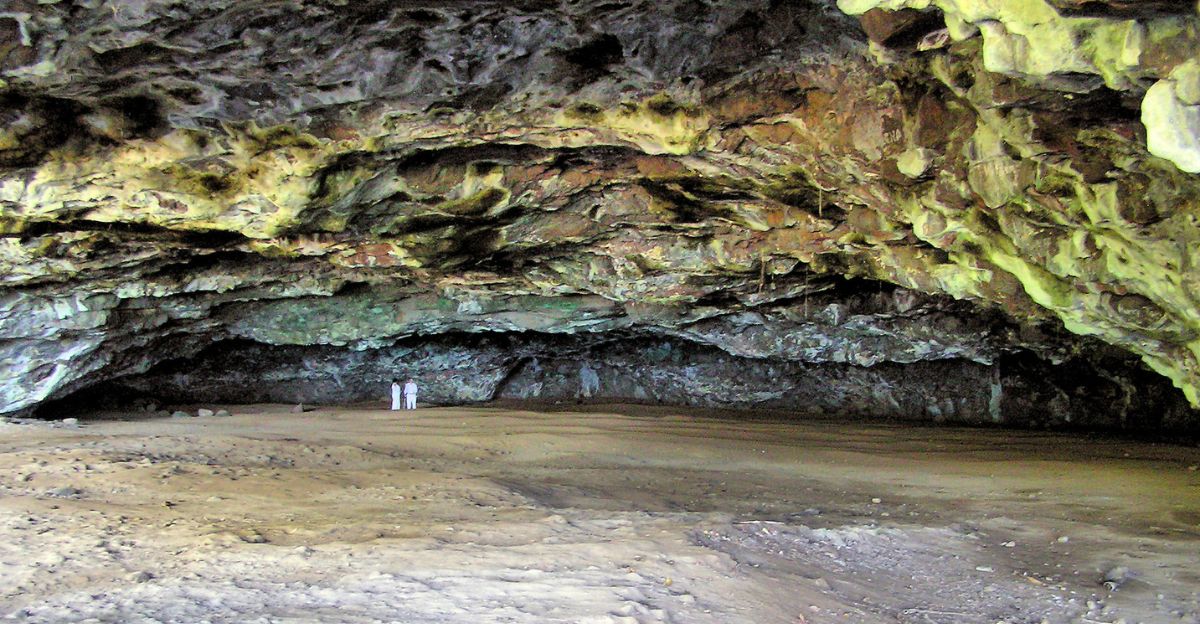
Visitors typically travel to the Big Island’s Kona coast to reach this remarkable cave and the Kekaha Kai State Park area, which is now more accessible due to improved roads leading to Maniniʻowali Beach. From the beach, the cave’s entrance is found within the rugged lava fields. This cave is part of a region historically inhabited by Native Hawaiians, who used the area for habitation, agriculture, and marine resource gathering as early as the pre-AD 1000 period.
Archaeological excavations in the broader Kekaha Kai State Park area have uncovered traditional artifacts like hammerstones, polishing stones, volcanic glass, marine shells, and fish bones, indicating long-term use and settlement. With much of the cave still unexplored, who knows what this cave has to offer?
4. Umi’i Manu System, Hawaii

This extensive system is located near the eastern boundary of the Pu’u Wa’awa’a ahupua’a in Hawaii. With some of the most incredible entrances, it’s one you don’t want to miss. This lava tube cave reaches approximately 1,869 feet and extends over 2.4 miles.
Ancient lava flows created this awe-inspiring cave with a network of tunnels and chambers, showing just how powerful it can truly be. Beyond its geological features, the Umi’i Manu System has a rich history of use by Native Hawaiians.
What Umi’i Manu Has to Offer
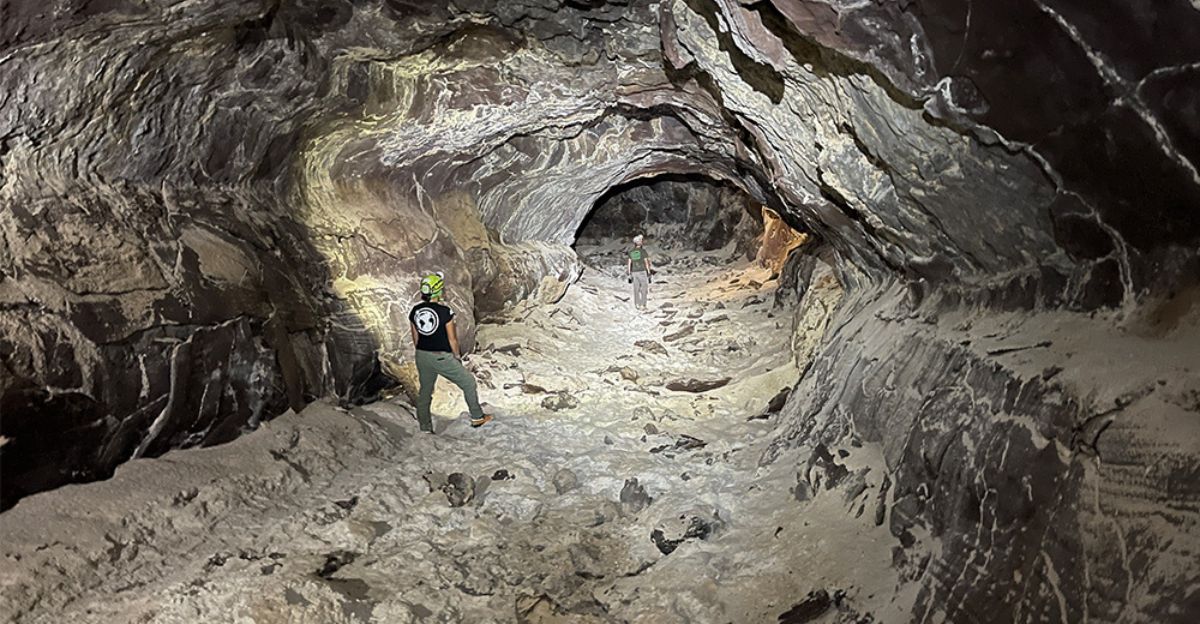
This cave system is recognized as the most significant fossil bird deposit site ever found on Hawai’i Island. Skeletal remains of more than 226 endemic and indigenous bird species were discovered within its passages. Archaeological evidence indicates that lava tubes in this area were used for shelter, water collection, food storage, and even burials.
Artifacts like charcoal from torches, stone platforms, and water-collecting calabashes have been found within the cave, showing how important this cave has always been in traditional Hawaiian life. While the cave isn’t an open-access area you can visit at any time, visitors can coordinate with local land managers or conservation authorities, as the cave lies within a protected region and may require special permission for entry.
3. Tears of the Turtle Cave, Montana

The only limestone cave on this list of incredible cave systems is ranked third, and it’s not located in Hawaii, either. Discovered in 2006, this cave is renowned for its extreme remoteness and can be found in Montana’s Bob Marshall Wilderness. This remote cave plunges to an astonishing depth of 2,477 feet beneath Turtlehead Mountain.
Reaching the entrance requires a 22-mile hike through rugged wilderness, making it one of the most inaccessible caves in the Lower 48. Within this cave, you can find a narrow, twisting fissure passage, often just two to three feet wide, with over 50 vertical rope drops and a constant temperature of about 37°F.
What The Tears of the Turtle Cave Has to Offer

This cave is no small feat for an inexperienced explorer, but it is worth every last climb and squeeze. Despite being explored for many years, no one truly knows where the cave ends, and a whole world is still waiting to be discovered. Formed in Cambrian Pagoda Limestone within a classic karst landscape, the cave perfectly represents how water has sculpted the underground world over millennia.
With every new exploration into this cave, researchers and explorers push the boundaries of the unknown to find the true end of this remarkable cave.
2. Kazumura Cave, Hawaii

This lava tube is located on the eastern slope of Kīlauea on Hawaii’s Big Island. It extends an astonishing 40.7 miles and descends 3,614 feet. Experts estimate this cave was formed around 500 years ago during the ʻAilāʻau lava flow. With over 100 known entrances and a complex network of passages ranging from wide, smooth corridors to narrow, stacked tunnels, this is the perfect place to explore if you’re looking for an adventure.
What Kazumura Cave Has to Offer

Despite its immense size, Kazumura Cave often lies just a few feet to a hundred feet below the surface, hidden beneath private properties and lush Hawaiian forests. Guided tours take explorers through winding passages revealing dramatic lava falls, intricate lavacicles, straws, and flow lines. Some of the highlights you can expect on this tour are the Pit Room, a vast collapsed chamber; the Maze, a labyrinthine section requiring rope work; and the Crystal Room, where mineral deposits shimmer on the walls.
Tours range from accessible walks to challenging technical explorations, ensuring that casual visitors and seasoned explorers can experience the cave’s wonders.
1. Delissea Cave System, Hawaii
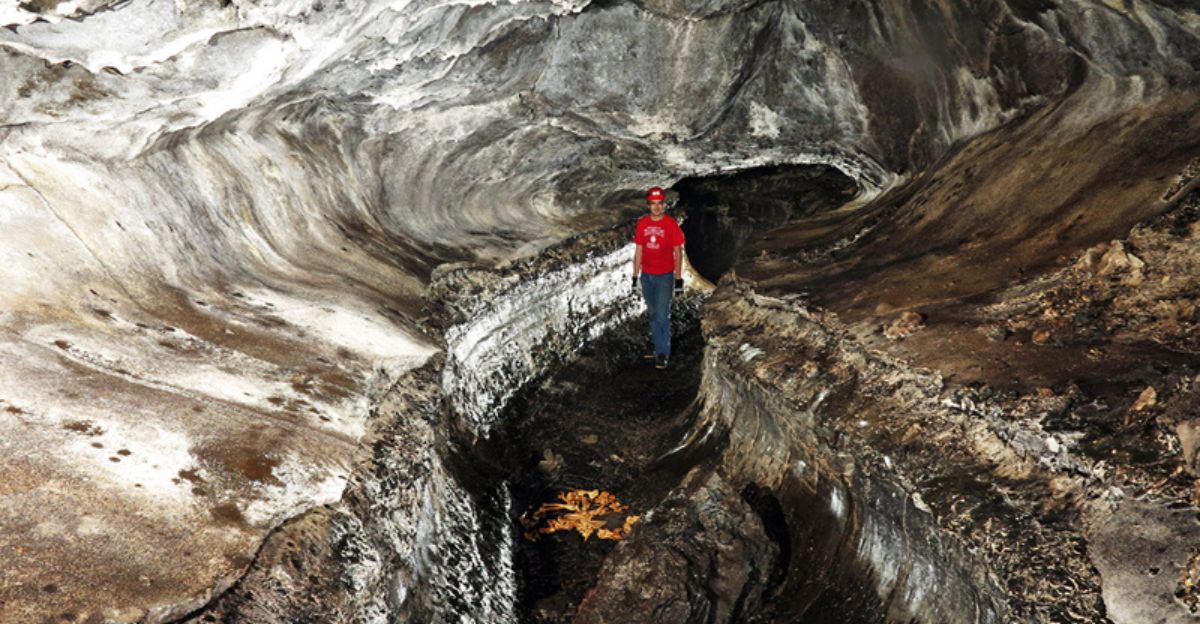
This incredible cave currently holds the title of the deepest lava tube in the United States. Located in the Pu‘uwa‘awa‘a ahupua‘a on the north flank of Hualālai volcano, it has over 32 miles of connected passages. This cave has the greatest vertical range of any lava tube cave in the world, spanning elevations from about 3,000 to 6,000 feet.
The cave is named after the Delissea tree, a rare native species once thought extinct, which has been found thriving near some of the cave’s entrances.
What Delissea Cave Has to Offer

Besides being one of the most incredible caves to explore in the region, it is also a treasure trove for biologists and paleontologists. The cave’s entrances, known as pukas, host thriving microhabitats for rare and endangered native plants, mosses, and tiny white mushrooms that grow in complete darkness.
Paleontologists have collected fossil bird bones from now-extinct species, making the cave significant for understanding Hawaii’s ancient ecosystems and avian history. This cave was also home to Native Hawaiians many years ago, as researchers found charcoal from torches, stone platforms, and water-collecting calabashes within the chambers of the cave.







